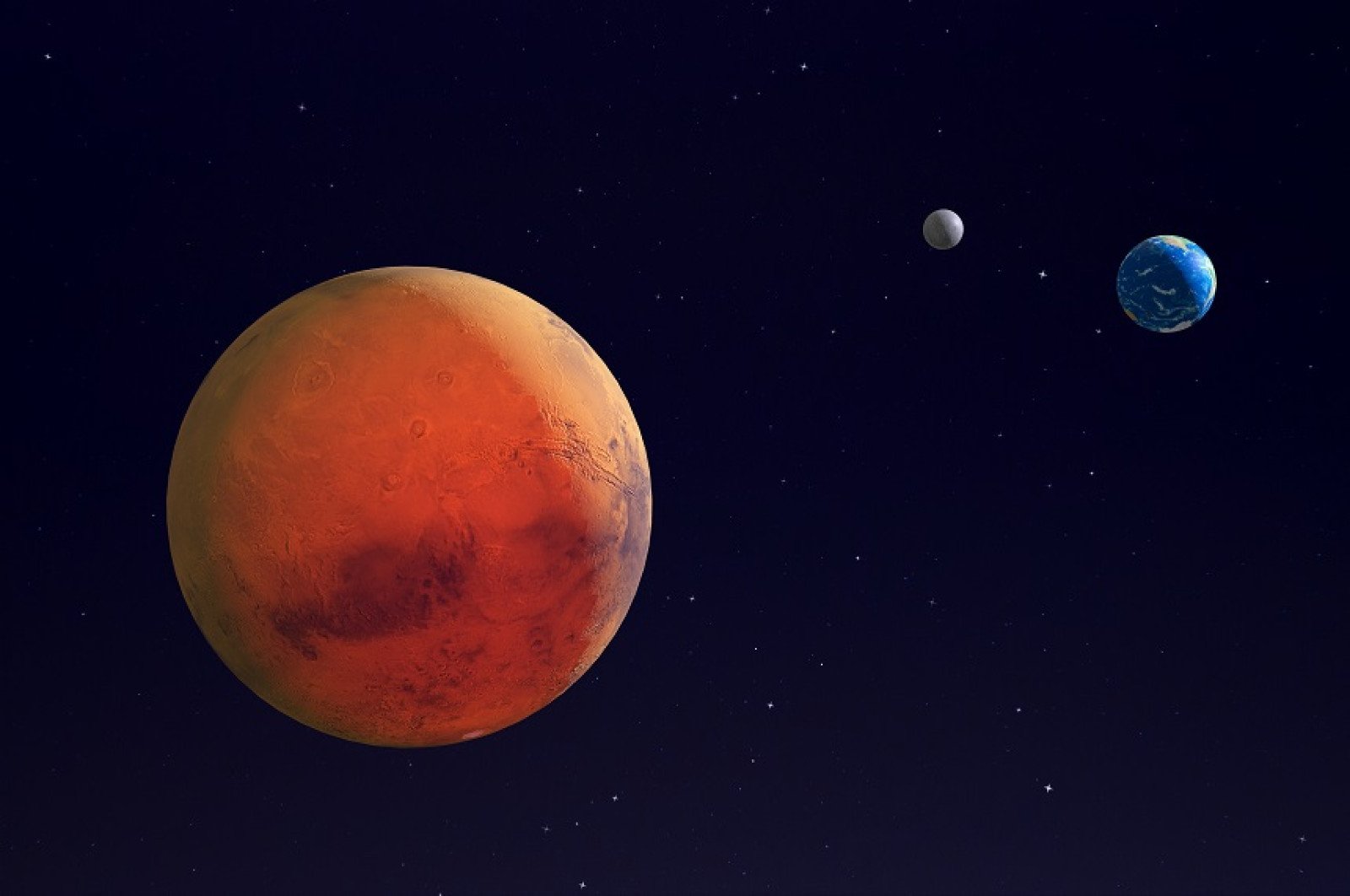Moving to Mars
Are humans considering moving to Mars? Through critical thinking and creative writing, students explore the possibility of living in this harsh environment.

Overview
Students start this activity by watching a video about the challenges and possibilities of humans going to Mars. After the video, they'll discuss the advantages and disadvantages of moving to Mars.
Instructions
What you'll need
- Laptop and projector or TV
- “Moving to Mars” student handout, one copy per student
- "Can we survive on Mars?" video (Source: BBC Earth lab)
- Start this activity by sharing a video about the possibility of humans living on Mars. The video reveals a harsh environment on Mars and explores some of the technical, emotional, and psychological challenges humans would face. Before starting the video, challenge students to watch for:
- Similarities between Earth and Mars (like volcanoes, craters, length of days)
- Differences between Earth and Mars (like gravity on Mars is only 38% of Earth, atmosphere is toxic with 95% carbon dioxide and lots of radiation)
- Little things that are a challenge (like not being able to scratch your nose and not sneezing)
- What kind of attributes the astronaut team would need for this type of mission (physical, humour, medical, musical, technical competence and personality diversity).
- Watch the "Can we survive on Mars?" video with the class.
- Next, have students share their thoughts on the similarities and differences between Earth and Mars, the challenges of living on Mars, and what attributes astronauts would need.
- Continue the discussion by having students, in pairs, consider:
- What are reasons why you would like to go to Mars?
- What are reasons why you would not like to go to Mars?
- Wrap up by getting groups to share their thoughts.
Thinking and reflecting
Provide each student with a copy of the “Moving to Mars” handout, ask the them to think and reflect by answering the questions in the handout, as follows:
- What are some of the benefits of moving to Mars?
- What are some of the physical, emotional and psychological challenges of moving to Mars?
- Consider how you would be a beneficial member of an astronaut team or early migrator to Mars. What could you contribute?
- How might you adapt to living on Mars? Consider things like radiation, gravity and immunity.
Modify or extend this activity
- Have students research First Peoples perspectives regarding aurora borealis and other celestial phenomena.
- Complete the “Passive design for heat domes” activity to consider living in extreme environments on earth in our changing climate.
Curriculum Fit
Science 6
Big idea
The solar system is part of the Milky Way, which is one of billions of galaxies
- Inquiry questions: What is an extreme environment? What extreme environments exist on Earth or in our galaxy?
Curricular competencies
Questioning and predicting
- Demonstrate a sustained curiosity about a scientific topic or problem of personal interest
- Make observations in familiar or unfamiliar contexts
Processing and analyzing data and information
- Experience and interpret the local environment
- Identify First Peoples perspectives and knowledge as sources of information
Evaluating
- Identify some of the social, ethical, and environmental implications of the findings from their own and others’ investigations
Applying and innovating
- Contribute to care for self, others, and community through personal or collaborative approaches
- Transfer and apply learning to new situations
- Generate and introduce new or refined ideas when problem solving
Communicating
- Communicate ideas, explanations, and processes in a variety of ways
- Express and reflect on personal, shared, or others’ experiences of place
Assessments
- Assess students’ understanding of challenges and possibilities of living on Mars
- Assess students’ ability to self-reflect on how they could be a beneficial member of an astronaut team
- Assess students’ ability to critically consider the impacts of living in this harsh environment
Teaching Notes
NASA has been sending exploratory missions to Mars since 1992, with the most recent robotic explorer called Perseverance, landing in 2020. (Source: NASA)
Private company, SpaceX, is also conducting tests with the goal of taking humans to Mars. View the link for more details about NASA’s Mars exploration program.
Potential benefits of Mars exploration include:
- Advancement of human knowledge, science and technology
- Advancements could be used for improvements and exploration here on Earth, such as in the deep ocean or parts of Antarctica
- Evolution of human experience and survival
- Improvement of life quality on Earth
Potential challenges of Mars exploration include:
- Economic cost
- Danger to human life
- Contamination of Mars
- Destruction of Martian Life that might exist






